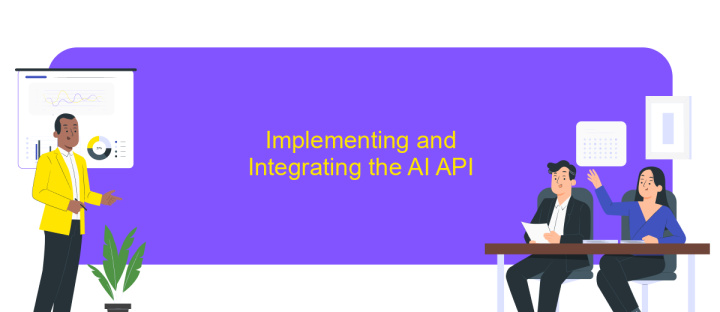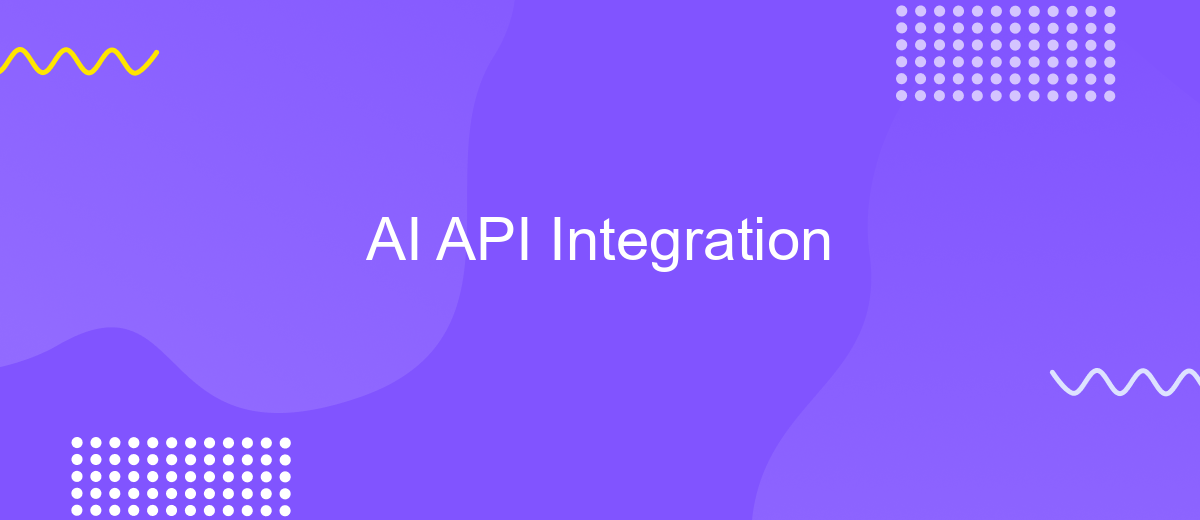AI API Integration
In today's rapidly evolving technological landscape, integrating AI APIs has become a cornerstone for businesses seeking to enhance their digital capabilities. AI API integration allows companies to seamlessly incorporate advanced machine learning and artificial intelligence functionalities into their existing systems. This not only streamlines operations but also drives innovation, enabling businesses to deliver smarter, more personalized experiences to their users and maintain a competitive edge in the market.
Understanding AI APIs and Their Capabilities
Artificial Intelligence (AI) APIs are powerful tools that enable developers to integrate AI functionalities into their applications seamlessly. These APIs provide pre-trained models and algorithms that can perform complex tasks, such as image recognition, natural language processing, and data analysis, without requiring extensive AI expertise. By leveraging AI APIs, businesses can enhance their products and services, automate processes, and gain valuable insights from data.
- Image and video analysis: Detect and classify objects, faces, and scenes in multimedia content.
- Natural language processing: Understand and generate human language for tasks like translation, sentiment analysis, and chatbots.
- Speech recognition: Convert spoken language into text for voice-activated applications and transcription services.
- Predictive analytics: Analyze data patterns to forecast trends and make data-driven decisions.
AI APIs are transforming industries by providing accessible and efficient AI solutions. They democratize AI technology, allowing organizations of all sizes to implement advanced AI capabilities without the need for deep technical knowledge. As AI continues to evolve, these APIs will become even more sophisticated, offering new opportunities for innovation and growth across various sectors.
Choosing the Right AI API for Your Needs

When selecting the right AI API for your needs, it's crucial to first identify the specific requirements of your project. Consider the type of data you'll be working with and the functionalities you need, such as natural language processing, image recognition, or predictive analytics. Evaluate the compatibility of the API with your existing systems and the ease of integration. Additionally, assess the scalability of the API to ensure it can handle future growth and increased data loads.
Another important factor is the support and documentation provided by the API provider. Comprehensive guides and responsive customer support can significantly ease the integration process. For those seeking a streamlined integration experience, services like ApiX-Drive can be invaluable. ApiX-Drive offers tools that facilitate seamless API connections, allowing you to automate workflows without extensive coding knowledge. By leveraging such platforms, you can focus more on leveraging AI capabilities rather than getting bogged down in technical complexities.
Implementing and Integrating the AI API

Integrating an AI API into your application can significantly enhance its capabilities, offering advanced features like natural language processing, image recognition, and predictive analytics. Before you begin, it's crucial to thoroughly understand the API documentation and ensure that it aligns with your project requirements. This understanding will guide you in effectively implementing the API and maximizing its potential within your system.
- Start by acquiring the necessary API keys and authentication credentials from the provider.
- Set up your development environment, ensuring all dependencies and libraries are correctly installed.
- Make initial API calls using sample data to test connectivity and functionality.
- Integrate the API into your application, focusing on seamless data flow and user interaction.
- Conduct rigorous testing to identify and resolve any integration issues or bugs.
Once the AI API is integrated, continuously monitor its performance and gather user feedback to make iterative improvements. This proactive approach ensures that the integration remains robust and adaptable to evolving user needs and technological advancements, ultimately enhancing the overall user experience and application efficiency.
Testing and Refining the Integration

Once the AI API integration is complete, rigorous testing is essential to ensure seamless functionality and performance. Begin by conducting unit tests to verify that individual components work as expected. This step helps in identifying any immediate issues in the code and allows for quick adjustments.
Following unit tests, proceed with integration testing. This phase focuses on the interaction between various components and the API itself. Simulate real-world scenarios to evaluate the system's response and check for any bottlenecks or errors. It's crucial to test under different conditions to ensure robustness and reliability.
- Conduct stress tests to determine the system's limits.
- Perform security assessments to safeguard data integrity.
- Gather user feedback to identify areas for improvement.
- Continuously monitor performance metrics post-deployment.
After testing, refine the integration based on the insights gathered. Address any shortcomings and optimize processes to enhance efficiency. Regular updates and maintenance are vital to adapt to evolving requirements and technological advancements, ensuring the integration remains effective and relevant.
Deploying and Maintaining the AI-Powered Application
Deploying an AI-powered application involves several crucial steps to ensure a seamless transition from development to production. Initially, it's essential to select a reliable cloud provider that can handle the computational demands of your AI models. Once the infrastructure is in place, containerization tools like Docker can be employed to streamline deployment processes, ensuring consistency across different environments. Additionally, implementing continuous integration and continuous deployment (CI/CD) pipelines can automate testing and deployment, reducing the risk of errors and speeding up the release cycle.
Maintaining the AI application requires ongoing monitoring and optimization to ensure performance and accuracy. Regularly updating the models with new data is vital to keep the application relevant and effective. Tools like ApiX-Drive can facilitate seamless integration between various data sources and your application, ensuring that data flows smoothly and efficiently. Additionally, setting up alert systems can help in identifying and addressing issues proactively. By combining these strategies, you can maintain a robust AI-powered application that adapts to changing needs and continues to deliver value over time.
FAQ
What is AI API Integration?
How can AI API Integration benefit my business?
What are the common challenges in AI API Integration?
Do I need coding skills to integrate AI APIs into my system?
How can I ensure the security of my data when using AI API Integration?
Apix-Drive will help optimize business processes, save you from a lot of routine tasks and unnecessary costs for automation, attracting additional specialists. Try setting up a free test connection with ApiX-Drive and see for yourself. Now you have to think about where to invest the freed time and money!

